The distinct farmhouse style emerged when farmers built frugal and practical dwellings on generous parcels of land to suit their needs. Since then, they have evolved into trendy home design ideas with a rustic charm while still prioritizing practicality and simplicity.
Farmhouses were meant for families and built with functionality in mind, featuring large open living spaces, impressive kitchens, and acres of outdoor space.
You can think of a farmhouse as minimalistic and simple, essentially a blank canvas on which you can live out your décor dreams.
Read on to find out more about farmhouse designs.
What are the key features of farmhouse-style homes?
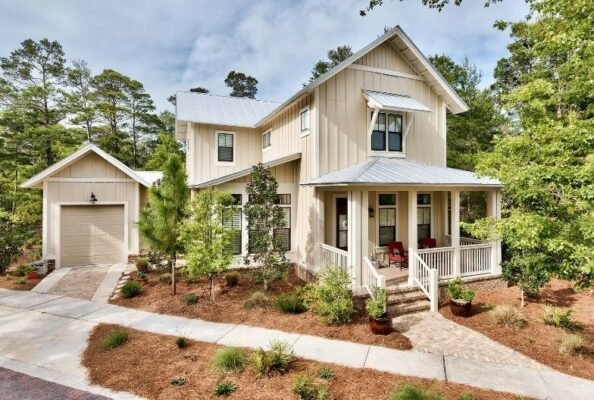
Neutral color palette
Farmhouses typically feature neutral paint colors. This means staying away from extremely bright or dark colors and painting each room in a similar color tone.
Experts recommend a soft gray, cream, or beige tone if you do not want it to be a plain boring white. You can consider warm neutrals, earth tones, cool neutrals, or natural blues and greens.
Painting a light color on the walls will set the tone for the farmhouse look, and keeping all the walls within the same color tone will help blend everything and will be calming to inhabitants.
You can complement the neutral color palette by using wood and metal accents to result in a rustic utilitarian look that merges the natural with the industrial.
Warm minimalism
Like other modern interior design styles, farmhouse homes embrace minimalism in form and the lack of clutter. This does not require excesses in furniture and flourishes, rather everything in the living spaces tends to be cozy, comfortable, and functional.
Natural materials
Farmhouse designs typically feature natural materials such as stone, wood, wicker, and cotton upholstery. You can consider matte finishes and low-shine natural materials to create a country-chic feel.
Mixed metal accents
The trend of mixed metal has a home in modern farmhouse design. This trend allows the old and the new to be combined, in addition to weathered metals and rustic wood to achieve a utilitarian aesthetic.
You can choose from a selection of metal accents for your farmhouse décor. From matte-finished metal to stainless steel, there is much to choose from to achieve a striking appearance.
How can you decorate a farmhouse?

Source -
Painting old furniture
If you have old furniture that is looking past its best days, try freshening it up with a new coat of paint. Remember that this does not work for everything because certain classic furniture looks best when left in its natural color.
Experts recommend painting the furniture in a similar color scheme to the general décor to end up with a theme that unites entire rooms together. Matching furniture to the color of your walls may offer an awesome color scheme that makes living spaces feel and look more homely.
Bring in the outdoors
Farmhouse decor is firmly rooted in the outside world and pays homage to the classic features found in traditional farmhouses built in rural and agricultural areas.
To achieve this look, wood is used from the ceiling all the way to the flooring, and other elements use earthy color palettes and patterns found in nature.
Experts recommend layering colors into the space such as sage or grassy green, muted sky blues, misty grays, lush lavenders and soft off-white.
Try adding various forms of wood to your décor to achieve a rustic farmhouse aesthetic. Antique spindles and washboards work well for this purpose. Another suggestion is to use old barn wood to create a farmhouse-style sign. Salvaged wood can also work just as well.

Source -
Hang decorative wall plaques
A great way to add color and a rustic feel is to hang plates on a wall or display them on a dresser or shelf. This is a great way to introduce some personality to your space and display some of your favorite ornaments.
For a modern aesthetic, look for bright colors, and for a more classic style, stick to neutral colors and natural materials.
Incorporate industrial accents
Industrial aspects work well in farmhouses, and more so in spaces like the kitchen. Elements like exposed brick walls, industrial lighting and copper backsplashes look fantastic when paired with a farmhouse color palettes.
You can also incorporate pendant lights to make a statement and add interest to a space with high ceilings.
Types of farmhouse design styles
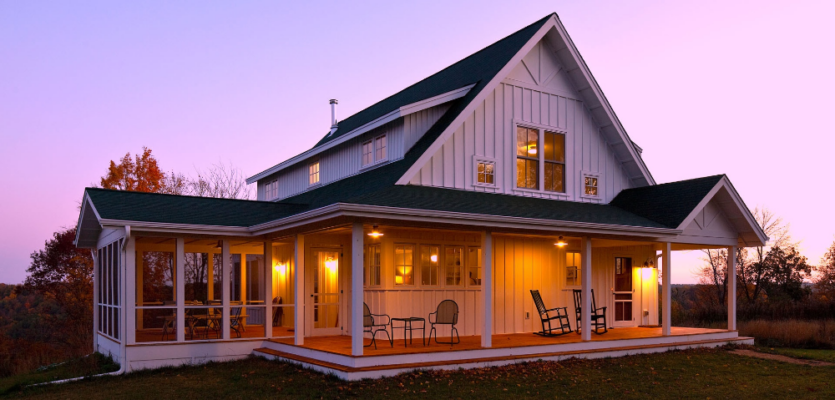
Source -
Industrial farmhouse
This variation is quite masculine as a result of being inspired by heavy machinery and equipment used on farms. Thus, an industrial farmhouse is characterized by cool metals, natural wood, exposed beams, industrial lighting, and hardware.
Other characteristics include warm color palettes, thick and heavy rustic wood, furnishings with blackened iron elements, and black and off-white pendants.
Coastal farmhouse
This interior design idea combines modern farmhouse vibes with beachy, coastal elements. While they have oceanic references, coastal farmhouses are still grounded in the farmhouse aesthetic. This involves blue and green color accents, and white oak flooring, cabinetry, and furniture.
Coastal farmhouses also feature classic details of millwork in the doors, molding, and trim in addition to warm metals like gold and brass. They also have natural materials like rattan and seagrass which go well together with polished nickel, chrome hardware and wooden beams.
Scandinavian farmhouse
This farmhouse variation prioritizes minimalism when creating its design. The main idea is to build a home that feels light, uncluttered, and modest. The Scandinavian element leans towards minimalist modernism, while the farmhouse side leads toward more rustic elements that feel more homely.
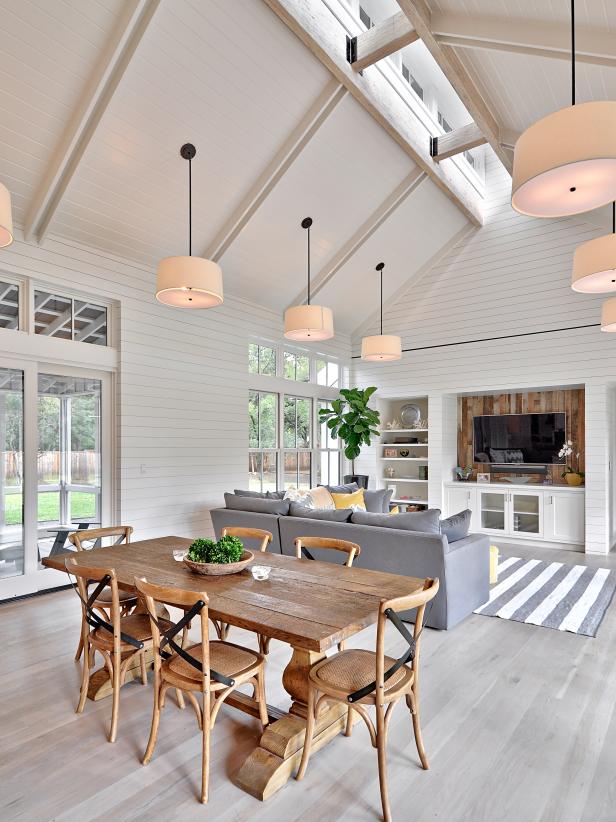
Source -
Modern Farmhouse
These are similar to Scandinavian farmhouses and are edited down to look fresh, clean, and sleek with very little ornamentation. Modern farmhouses have an emphasis on contemporary design in elements such as concrete flooring, modern lighting, and exposed brick walls.

Source -
This aesthetic can be further achieved using statement furniture pieces, leather upholstery, antiques used sparingly, bright walls and interiors, and minimal black accents paired with well-worn wood.
Rustic farmhouse
A rustic design is ideal for people who love repurposing décor and find it in flea markets. The aesthetic is all about handcrafted elements and a ruggedness that is not found in other variations of farmhouses.
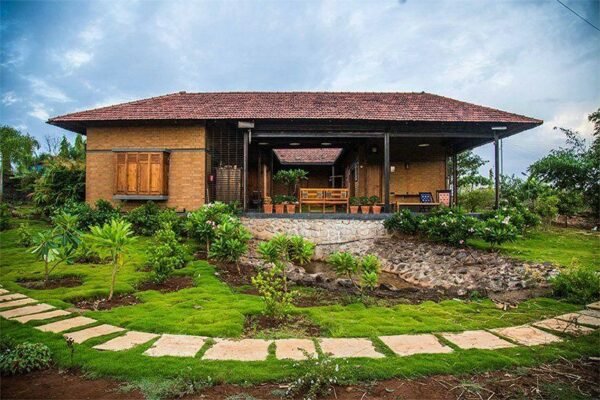
Source -
A signature feature of rustic farmhouses is white walls and vintage décor that makes the design style feel quaint and down-to-earth.
Other characteristics of rustic farmhouses include open shelving, warm-to-grey distressed woods, subtle tile backsplashes and industrial materials such as blackened steel décor.
Country Farmhouse
This is one of the most popular farmhouse variations and is ideal for you if you prefer to steer clear of heavy industrial décor. Country farmhouses are known to feature marble, cream-to-white and gray color palettes, with more ornamentation than other types of farmhouses.
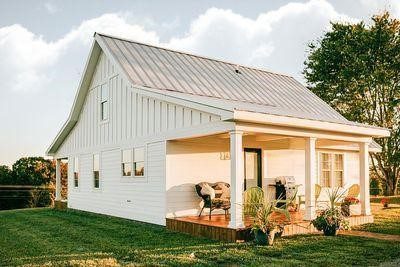
Source -
Country farmhouses are characterized by warm hardwood floors, antique accents, woven furnishings, marble countertops and table tops, and galvanized metals.
Colonial farmhouse
Colonial farmhouses embrace the old world in a way that can only be explored in books. They use authentic historical materials like exposed wood beams, stone, and colonial grid windows to result in a charming aesthetic that transports you back in time.
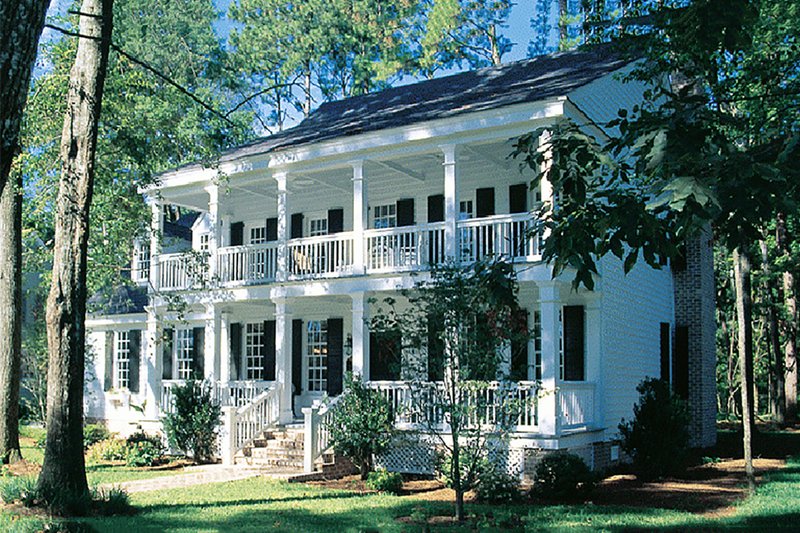
Source -
Colonial farmhouses feature millwork detailing, rich colors on wood-paneled walls, brick fireplaces and flooring and a generally muted, natural color palette.
Conclusion
Farmhouses reflect the aesthetics of rural architecture while embracing elements of modern comforts to result in a cozy and stylish look. These houses are warm and full of rustic charm that makes them feel like home even before you step through the front door.
Living farmhouse style does not mean living on a farm, rather it means decorating and styling the home with practical elements that mimic living the country life. Use soothing color combinations, natural elements, and a variety of textures to achieve the classic farmhouse aesthetic.
Remember that farmhouses are open to interpretation and that you can incorporate the elements described in this article to realize your dream design and décor.




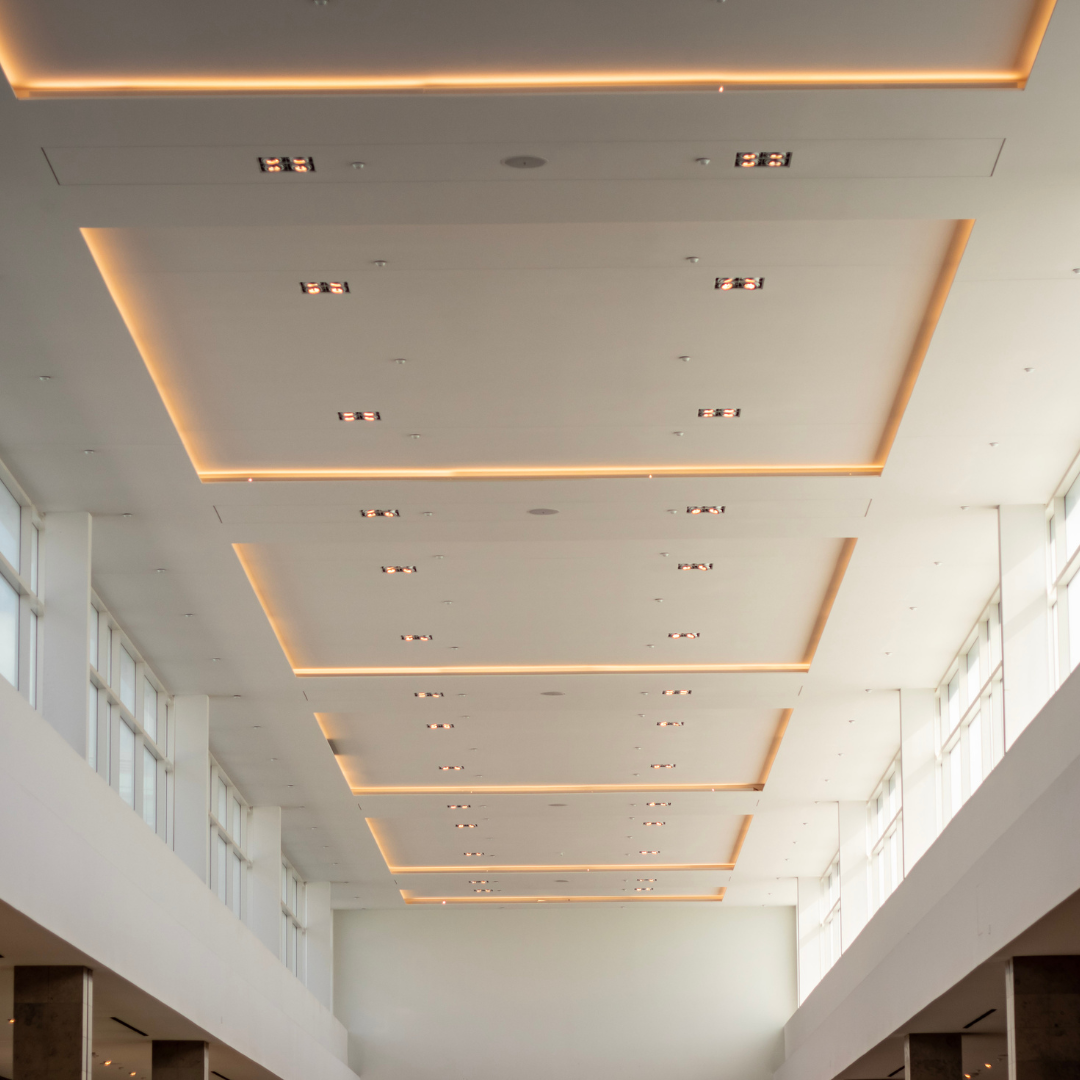
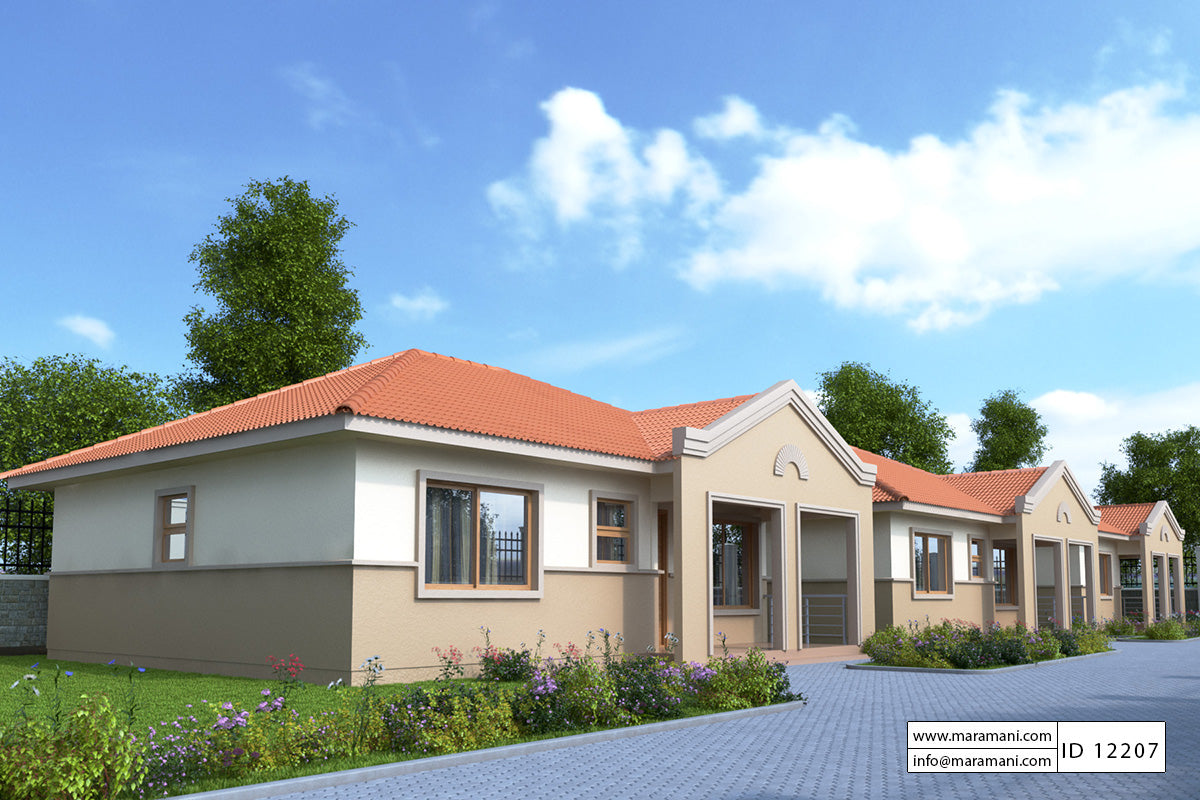
Leave a comment
This site is protected by hCaptcha and the hCaptcha Privacy Policy and Terms of Service apply.